Looking for a creative way to improve your landscape? Why not plant a wildflower garden? Wildflowers can add beauty and interest to any outdoor space, and they’re easy to grow! This article will answer some common questions about planting wildflower gardens, and it will provide some tips and ideas to help you get started. So, whether you’re a beginner or an experienced gardener, read on for some inspiration!
What Are Wildflowers?
Wildflowers are flowering plants that grow on their own in the wild without any human intervention. They are usually native to a particular area, and they come in a variety of colors, sizes, shapes, and textures. Wildflowers typically bloom during specific times of the year — usually spring or summer — but some can also be found later in the season. Many wildflower species are rare or endangered due to habitat destruction as well as over-harvesting for gardens and other landscaping projects.
Wildflower Gardens are popular for a variety of reasons. First, they can provide a beautiful backdrop for outdoor activities and events like weddings, barbecues, or family gatherings. Additionally, wildflowers create the perfect natural environment for wildlife such as birds, butterflies, and other insects to thrive in. They also help prevent soil erosion and can keep weeds from taking over an area. Plus, when summer comes around colorful blooms make any garden look stunning!
Finally, planting wildflowers can be relatively inexpensive compared to buying cultivated plants from nurseries and is often simpler since they don’t require as much maintenance or extra care. No wonder why so many people choose to add a wildflower garden to their backyard oasis [1]!

15 expert ways to add wildflowers to your garden
Try a wildflower meadow look
If you want to make your garden look more natural and inviting, an easy way to do so is by creating a wildflower meadow. This type of garden is made up of native species that are adapted to the climate in your area, as well as other plants that thrive in dry or wet environments. By including different types of wildflowers, you can create a balance between colors and textures for a beautiful display throughout the year.
Add Some Native Species
Native species will always be more successful when grown in their natural environment. It’s best to research which wildflowers are native to your region before planting them in your garden. Try adding some native annuals like prairie coneflower or purple prairie clover, as well as some perennials like black-eyed Susan’s and purple coneflower.
Mix Annuals and Perennials
Although wildflowers typically don’t require a lot of maintenance, you can still mix annuals with perennials to extend the bloom period in your garden. By adding annual varieties that flower early in spring and late into fall, you can ensure there are plenty of blooms throughout the year.
Replace sections of lawn with wildflowers
If you’re looking for an easy way to add more wildflowers to your garden, why not replace a section of lawn with a wildflower meadow? This will save you time and effort when it comes to mowing and weeding, while still providing plenty of beautiful blooms.
Use wildflowers to enhance dreamy features
Wildflowers don’t just look good in the garden; they can also be used to enhance dreamy features like ponds and streams. Try planting some water-loving varieties around your pond or stream, such as marsh marigolds or primroses, to add some color and texture.
Choose wildflowers for natural container ideas
Containers are a great way to bring some charm and color to patios and outdoor spaces, as well as add interest to any area of your garden. Try choosing wildflower varieties that love the sun like California poppies or postcard flowers for natural container ideas.
Create a habitat with wildflowers
If you’d like to create a wildlife-friendly garden, why not try some native wildflowers? Not only do they provide beauty and fragrance in the garden, but they also support our local pollinators by providing them with food sources. Planting some perennials like blanket flowers or coreopsis will attract butterflies and bees, while also creating an attractive display in your garden.
Roll out a wildflower strip
Another great way to add wildflowers to your garden is by rolling out a wildflower strip. This involves planting a strip of native wildflowers along the edge or border of your lawn, and then allowing them to spread naturally over time. This can help create a colorful and textured display that will look great in any garden.
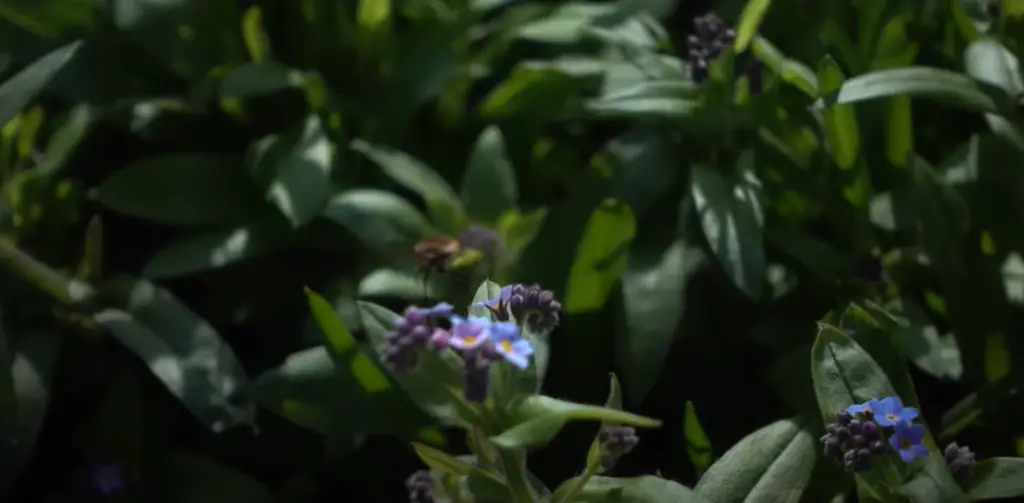
Add wild roses to the mix
Wild roses are a great addition to any garden. Not only do they provide beautiful fragrance and color, but their flowers will attract bees and butterflies all summer long. Try adding some wild rose varieties like the native Cherokee rose or Rosa setigera for an eye-catching display in your garden.
Allow some areas of the garden to go wild
If you love watching wildflowers grow without interference, then why not allow some parts of your garden to go wild? Allowing these areas to naturalize will help disperse different types of wildflowers, while also providing a habitat for beneficial insects and other wildlife.
Combine water and wildflowers for an immersive feel
Wildflowers can look stunning when combined with water. Try planting some native varieties around your pond or stream to create an immersive, natural feel in your garden. Some great options include marsh marigolds and meadow sweet.
Turn a small section of the garden into a wildflower area
If you’d like to add some color and texture to a small section of your garden, why not turn it into a wildflower area? Simply scatter some native wildflower seeds in the area, then sit back and watch as they begin to grow. This will provide plenty of beauty and fragrance in your garden without any effort on your part.
Transform soil left over from landscaping
If you’ve recently completed some landscaping work, don’t throw away the leftover soil. Instead, try transforming it into a wildflower meadow. This can be done easily by scattering wildflower seeds over the soil and then waiting for them to grow. The result will be an attractive display of color and texture in your garden.
Add wildflowers to hedges or borders
Wildflowers can also add a touch of beauty and interest to any hedges or borders in your garden. Planting some varieties such as corn poppies or common daisies along the edge of these areas will help create an eye-catching display that is sure to draw attention.
Wild up your entertaining space
If you enjoy entertaining outdoors, why not add some wildflowers to your outdoor space? Planting some showy varieties such as scarlet sage or cosmos can help create a beautiful and inviting atmosphere that is sure to impress your guests [2].

How to plant a Wildflower Garden?
Preparing for a Wildflower Garden
- Choose a site: The most important factor in creating a successful wildflower garden is choosing the right location. Look for a spot that gets at least 6 to 8 hours of direct sunlight each day and has well-draining soil.
- Prepare the soil: If you’re starting with bare ground, you’ll need to prepare it before planting your wildflowers. This includes tilling or spading the soil and adding organic material such as compost or aged manure to help improve drainage and aeration.
- Test the pH level: Wildflowers prefer slightly acidic soils between 5.5 and 7 (neutral). A simple home testing kit can be used to determine the pH level of your soil so that you can make any necessary adjustments.
Planting a Wildflower Garden
- Select your seeds: Most wildflowers don’t need to be grown from seedlings – they will do just fine when planted directly from seed packets. Choose an assortment of annuals and perennials depending on the climate and soil conditions in your garden.
- Scatter the seeds: Once you’ve chosen your wildflowers, it’s time to start planting! Scatter the seeds across the prepared ground, making sure to keep them evenly distributed throughout the entire area. You can also mix some potting soil into the topsoil for extra nutrients if desired.
- Protect with mulch: Finally, cover the soil with a layer of mulch. This will help to protect the wildflowers from wind and rain, as well as suppress weeds and lock in moisture.
- Water regularly: Keep your wildflowers watered regularly – about an inch per week is usually sufficient – until they’ve become established and can survive on their own. Once they’re established, you can let Mother Nature take care of them!
Maintaining Control in a Wildflower Garden
- Monitor and remove weeds: While wildflowers are generally pretty low maintenance, they still require some care to keep them looking their best. Regularly monitor your garden for any weed growth and be sure to remove it as soon as possible so that it doesn’t compete with your wildflowers for nutrients and sunlight.
- Prune back spent flowers: After the blooming season has ended, prune back any dead or faded flowers to promote new growth. This will also help to keep your garden looking tidy and neat!
- Fertilize lightly: If you’d like, you can give your wildflower garden a boost by lightly fertilizing throughout the growing season with a balanced fertilizer. Just be sure not to over-fertilize as this can lead to excessive growth and weaker plants.
Growing Tips for Wildflower Gardens
- Start with hardy species: When starting a wildflower garden, it’s best to choose hardy species that are native to your area and suited to the climate and soil conditions in your garden.
- Plant in the early spring: It’s best to get your wildflowers planted in the early spring when the ground is still cool, as this will give them plenty of time to establish themselves before hot weather sets in.
- Don’t overcrowd: Be sure not to overcrowd your garden, as this can lead to weak or stunted plants and fewer blooms overall. Give each plant enough room to grow and spread out!
- Leave some areas untouched: Leave some areas of your garden untouched to provide habitats for beneficial insects and wildlife. This will help to keep the natural balance in your garden intact.
- Enjoy! Last but not least, don’t forget to enjoy your wildflower garden! You can sit back and take in the beauty of all those brilliant blooms or get up close and admire them from a different perspective. Either way, you’re sure to have a great time [3]!
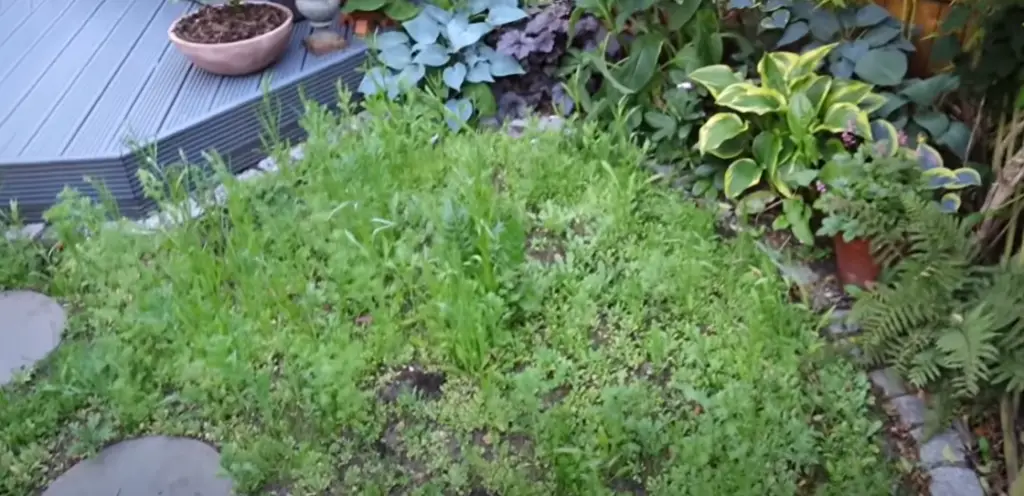
Additional Tips for Growing Wildflowers
- Choose an area with adequate drainage: Wildflowers prefer soil that drains quickly, so choose a spot that is not prone to standing water.
- Plant at the right time: Make sure you plant your wildflowers at the right time of year to ensure they get enough sunlight and moisture.
- Test your soil: Before planting, it’s important to test your soil to determine its pH level so that you can make any necessary adjustments.
- Provide adequate irrigation: Wildflowers require regular watering, especially during dry spells or periods of high heat. Water them thoroughly but not too frequently – once a week should be sufficient unless temperatures are particularly high.
- Weed regularly: Keep an eye on weeds in your wildflower garden and remove them as soon as possible to prevent competition for resources with your plants.
- Don’t over-fertilize: Fertilizing wildflowers is generally not necessary and can even be harmful if done in excess.
- Mulch: Finally, cover the soil with a layer of mulch. This will help to protect the wildflowers from wind and rain, as well as suppress weeds and lock in moisture.
- Leave some areas untouched: Also, leave some areas of your garden untouched to provide habitats for beneficial insects and wildlife. This will help to keep the natural balance in your garden intact.
- Enjoy: Don’t forget to enjoy your wildflower garden! Take in the beauty of all those brilliant blooms or get up close and admire them from a different perspective. Either way, you’re sure to have a great time!
Wildflower Garden Plant Suggestions
To Attract Butterflies
Lantanas – Lantanas are colorful, easy-to-care-for flowers that attract all sorts of butterflies.
Milkweed – Milkweed is an important source of food for Monarch butterflies. Planting milkweed in your wildflower garden will help increase the local population and provide a stunning backdrop for them.
Snapdragon – Snapdragons are tall, bold flowers that bring plenty of color to the garden. They also attract more than just butterflies; bumblebees and hummingbirds love these plants too!
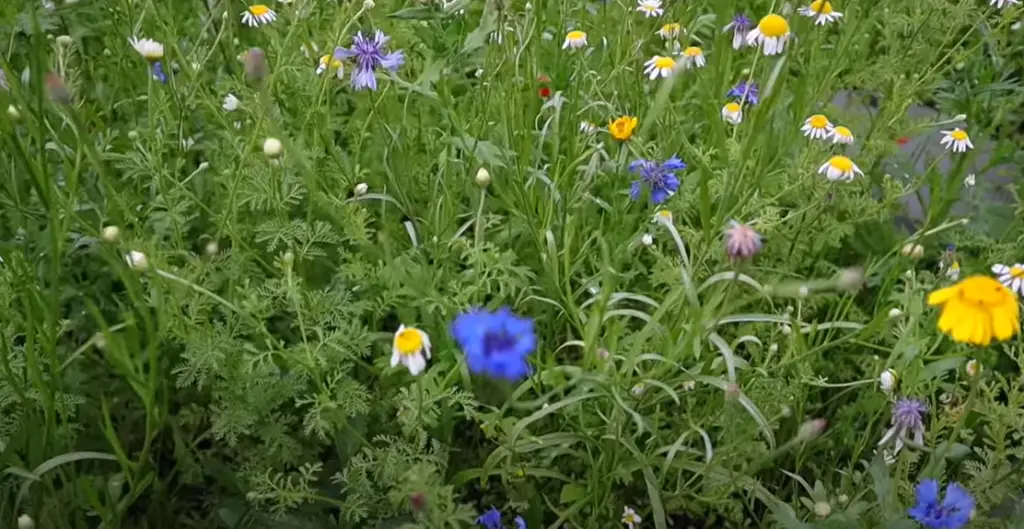
To Attract Birds
Sunflowers – Sunflowers have long been a favorite of both birds and humans alike. Bright yellow petals and plentiful seeds make sunflowers ideal bird feeders in any wildflower garden.
Marigolds – Marigolds are a great way to add color to your wildflower garden, while also attracting birds. They come in a variety of sizes, colors and shapes, so there’s something for everyone!
Cosmos – Cosmos come in many shades of pink and purple, and they’re filled with nectar that will draw finches and other species of birds. The fern-like foliage is also a nice touch.
To Attract Bees
Lavender – Lavender is an aromatic flower that attracts both butterflies and bees alike. It can be grown as an herb or cut flower, making it a versatile addition to any wildflower garden.
Asters – Asters are daisy-like flowers that come in a variety of colors, shapes and sizes. They’re easy to maintain and attract both butterflies and bees to the garden.
Daisy – Daisies are cheerful, low-maintenance flowers that bring plenty of color to any wildflower garden. Not only will they add a pop of color, but they’ll also draw in plenty of bees!
To Attract Hummingbirds
Salvia – Salvia is an easy-to-care for perennial flower that brings bright color to the garden. It’s also a great way to attract hummingbirds, as these birds love its nectar!
Columbine – The nodding blooms of columbine are always a favorite with hummingbirds. These flowers come in many colors and shapes, making them a great addition to any wildflower garden.
Trumpet Vine – The trumpet vine is an aggressive climbing vine that brings a pop of color to the garden with its bright red blooms. Hummingbirds love these flowers, so it’s sure to be a hit in your wildflower garden!
To Attract Ladybugs
Marigolds – Marigolds are great for attracting birds, but they’re also a favorite of ladybugs! These bright and cheerful flowers provide nectar for the bugs, as well as a safe place to lay their eggs.
Daisy – Daisies are beloved by bees and butterflies alike, but they’re also known to attract ladybugs. The yellow centers make it easy for these bugs to spot them from a distance.
Zinnia – Zinnias come in many different shapes and sizes, with blooms that range from tiny daisy-like flowers to larger cactus varieties. They’re especially attractive to ladybugs, which will help keep the insect population in check.

For a Variety of Color and Texture in the Garden Space:
Shasta daisy – Shasta daisies are a classic wildflower that adds a lovely pop of white to the garden. Their bold, bright centers make them stand out, while their long petals provide an interesting texture.
Coreopsis – Coreopsis is an easy-to-care-for flower that blooms in many shades of yellow and orange. It’s a great way to add some color to your garden without too much effort or maintenance!
Coneflower – The cone shape of coneflowers makes them stand out amongst other flowers, and they come in many different colors from purple to white. These cheerful blooms will bring plenty of texture and depth to your wildflower garden.
FAQ
What is the easiest wildflower to grow?
The easiest wildflower to grow is the common daisy. This low-maintenance flower requires very little care and can thrive in both sunny and shady environments with either dry or moist soil. If you are just getting started, daisies are a great choice as they are relatively hardy and easy to spot in your garden. They also come in many different varieties, so you can find one that matches perfectly with the look of your garden!
How fast do wildflowers grow?
Wildflowers typically take anywhere from two weeks to two months to germinate and begin growing. Once established, wildflowers will continue to bloom throughout the season until frost sets in. The speed at which they grow will depend on the type of wildflower and the growing conditions, but most will reach their full height in about two months.
What is the best time to plant wildflowers?
The best time to plant wildflowers depends on your location, as different regions have different climates. Generally speaking, it’s best to sow wildflower seeds in late winter or early spring for summer to bloom. If you live in a warmer climate where frost is rare, you can also sow seeds in the fall for bloom during the next spring and summer. Additionally, some varieties of wildflowers only need light frosting before germination, which allows them to be planted almost any time of year!
Are there any tricks to growing wildflowers?
Yes! Here are a few tips that can help you get the most out of your wildflower garden:
- Start with quality soil and fertilizer. Make sure to use a good-quality soil mix and fertilize appropriately for optimal growth.
- Plant in areas where there is plenty of sunlight and adequate drainage. Wildflowers need at least 6 hours of direct sun each day, so make sure to choose an area that gets plenty of sunlight throughout the day.
- Water consistently but do not overwater. Overwatering can lead to root rot and other issues, so be careful not to give your plants too much water.
- Deadhead frequently by removing spent blooms from the plant. This will encourage more blooms throughout the season.
- Cut back plants in late summer or early fall to help them survive winter and come back strong the following year.
- Add companion plants such as herbs and vegetables for an added pop of color! These can attract beneficial insects, provide a food source for pollinators, and even help improve soil health.
Do wildflowers need fertilizer?
Yes, wildflowers do need some fertilizer to grow at their best. Use a slow-release organic fertilizer that is specifically designed for wildflowers to give them all of the nutrients they need without overloading them with excess nitrogen which can prevent flowering. Applying a balanced fertilizer once per season should be enough to keep your wildflowers healthy and blooming. Additionally, adding organic matter such as compost or manure can help to improve the soil quality and provide additional nutrients for your plants.
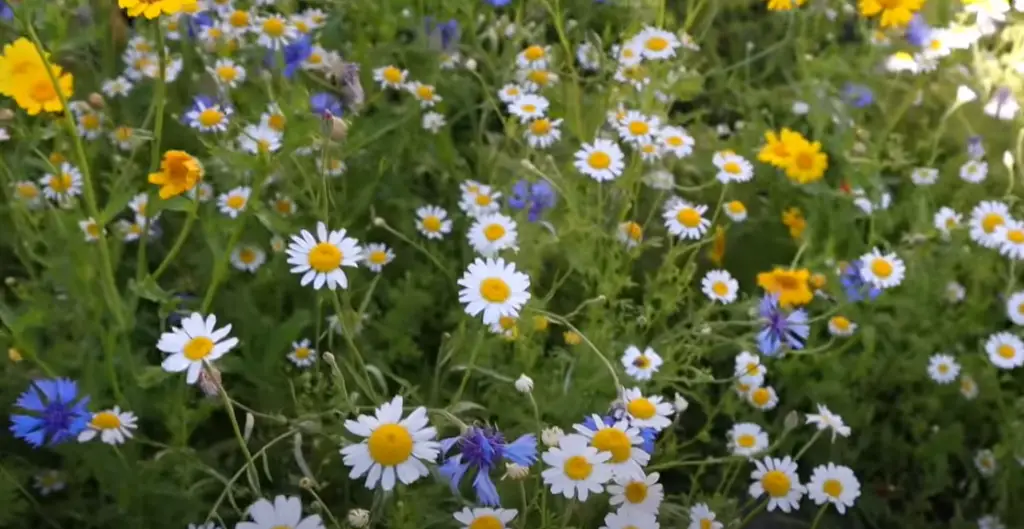
How often should I water wildflowers?
Wildflowers need consistent moisture in order to thrive. Aim to water them around once a week, depending on the amount of rain you get in your area. When watering, make sure that the top few inches of soil are moist but not soggy. Additionally, mulching heavily around the plants will help to retain moisture and discourage weed growth.
Where is the best place to plant wildflowers?
Wildflowers prefer sunny, well-drained locations. If you have an area in your yard that gets plenty of sunlight and has good drainage, this is the ideal spot for a wildflower garden. Additionally, wildflowers can also be planted along roadsides or other open areas to add pops of color and attract pollinators.
What is the best soil for a wildflower garden?
Wildflowers prefer well-draining soil that is full of organic matter. Adding a layer of compost or aged manure can help to improve the texture and nutrient content of your soil, as well as provide food for beneficial insects. Additionally, adding some slow-release fertilizer specific to wildflowers can give them an extra boost in growth and flowering.
Are wildflowers considered annuals or perennials?
Most wildflower species are considered to be annuals, meaning they will bloom once during the season and then die off at the end of the year. However, some species may act as either biennials or perennials depending on the growing conditions. Biennial wildflowers will bloom in their second year of growth and then die off, while perennial wildflowers will bloom for many years.
Do wildflowers need to be deadheaded?
Deadheading, or removing spent blooms from plants, is an important step in ensuring that your wildflower garden thrives. Deadheading helps to prolong the flowering period by preventing seed formation and encouraging additional flowering. Be sure to check your garden regularly and remove any spent blooms as soon as you can to keep it looking its best!
Can I just sprinkle wildflower seeds in the garden?
Yes, you can sprinkle wildflower seeds in your garden but keep in mind that it is important to provide the right conditions for the seeds to germinate and thrive. Be sure to prepare the soil beforehand by adding organic matter or fertilizer and make sure the area gets plenty of sunlight throughout the day. Additionally, water consistently but do not overwater as this can lead to root rot and other issues. Deadhead frequently by removing spent blooms from the plant to encourage more blooms throughout the season, and cut back plants in late summer or early fall. Finally, add companion plants such as herbs and vegetables for an added pop of color!
Useful Video: How to start a wildflower garden
Conclusion
Wildflower Gardens are a wonderful way to enjoy the beauty of nature and add a touch of color and vibrancy to any outdoor space. From small flower beds or containers to large-scale community gardens, wildflower gardens can accommodate everyone’s needs. Planting wildflowers is relatively easy; all that’s needed is soil, sun, and moisture. With a little bit of effort, you can create an ever-changing display of vibrant blossoms each year. Not only will your garden look spectacular but it will also attract beneficial insects like bees and butterflies that help our environment by pollinating plants. If you have decided to start your wildflower garden, follow these instructions for the best results possible!
References:
- https://www.meadowmania.co.uk/news/blog/2018/01/22/what-are-wildflowers/
- https://www.homesandgardens.com/gardens/wildflower-garden-ideas
- https://www.thespruce.com/wildflower-gardening-1403564





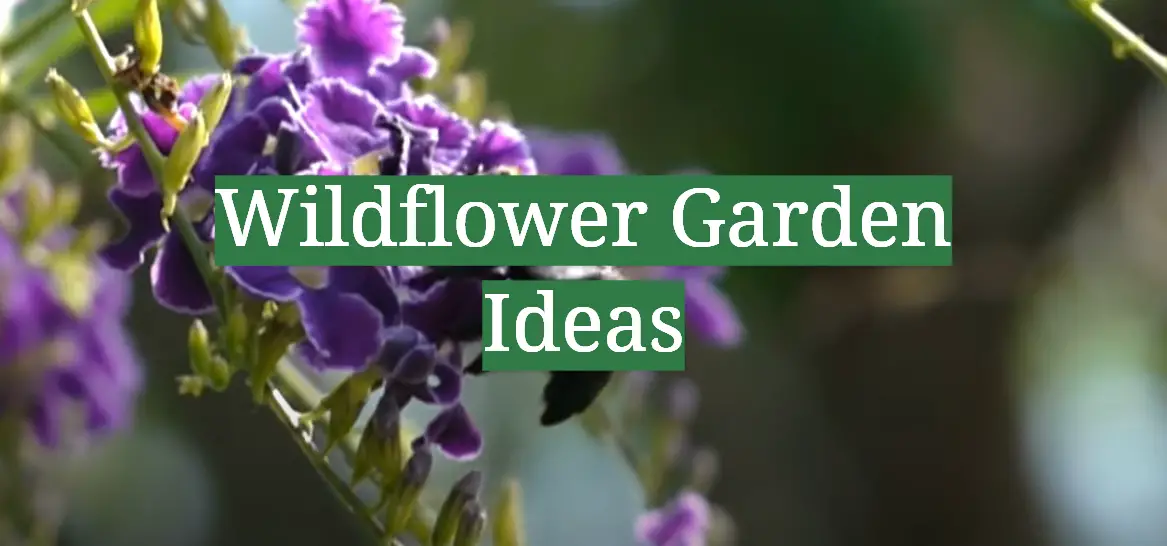




Leave a Reply
View Comments